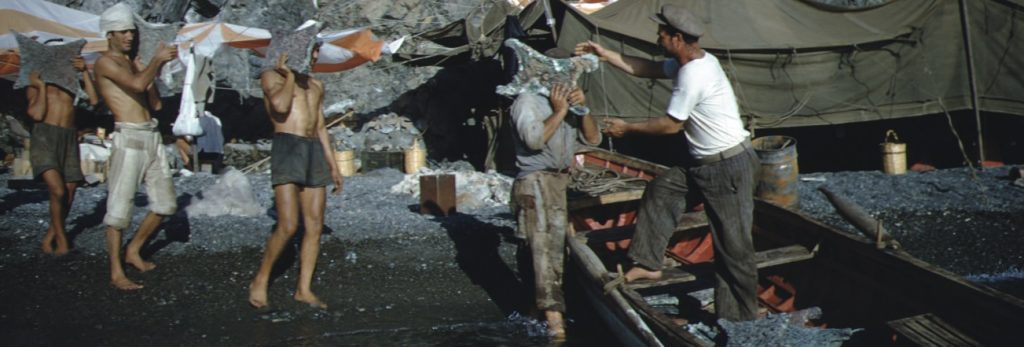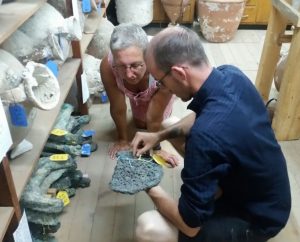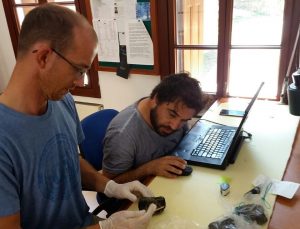Discovery and excavation may be the glamorous aspects of archaeology, but it’s later, during the less photogenic years of analysis in laboratories and in libraries that the treasure of information found on the seabed becomes apparent. What sets INA apart is the institutional insistence on diligent and often long-term study of these underwater discoveries. This July, the Cape Gelidonya team convened at INA’s Research Center in Bodrum, Turkey to continue studying the finds and records from more than fifty years of exploration at the site.
This year the focus was on the fragmentary copper ingots that comprise a much larger part of the ship’s cargo than previously recognized. Based on the 2013 work of Lente van Brempt (Ph.D. University of Cyprus), archaeometallurgists Joseph (Seppi) Lehner(University of Central Florida) and Emre Kuruçayırlı (Ph.D. Bryn Mawr College), with the help of project director Nicolle Hirschfeld (Trinity University), have now documented more than 750 ingot fragments, comprising at least 1/3 of the entire copper shipment. George Bass’ thesis that this was the ship of a traveling tinker remains the best explanation but identification of the ingot typology and scientific analysis of the copper’s composition and its microscopic structure will tell us more about where the smith obtained his copper, the various means of metal production, and how and why it was broken up for circulation. In so many ways, the metal cargo of the ship that sank at Gelidonya differed from that of its Late Bronze Age predecessor at Uluburun. Our challenge now is to explain how and why.
Special thanks to Robyn Woodward and Kenneth and Adair Small for funding the researchers’ travel to Bodrum. Learn more about the Cape Gelidonya Excavation here. Get the news faster by subscribing to INA Insider!





